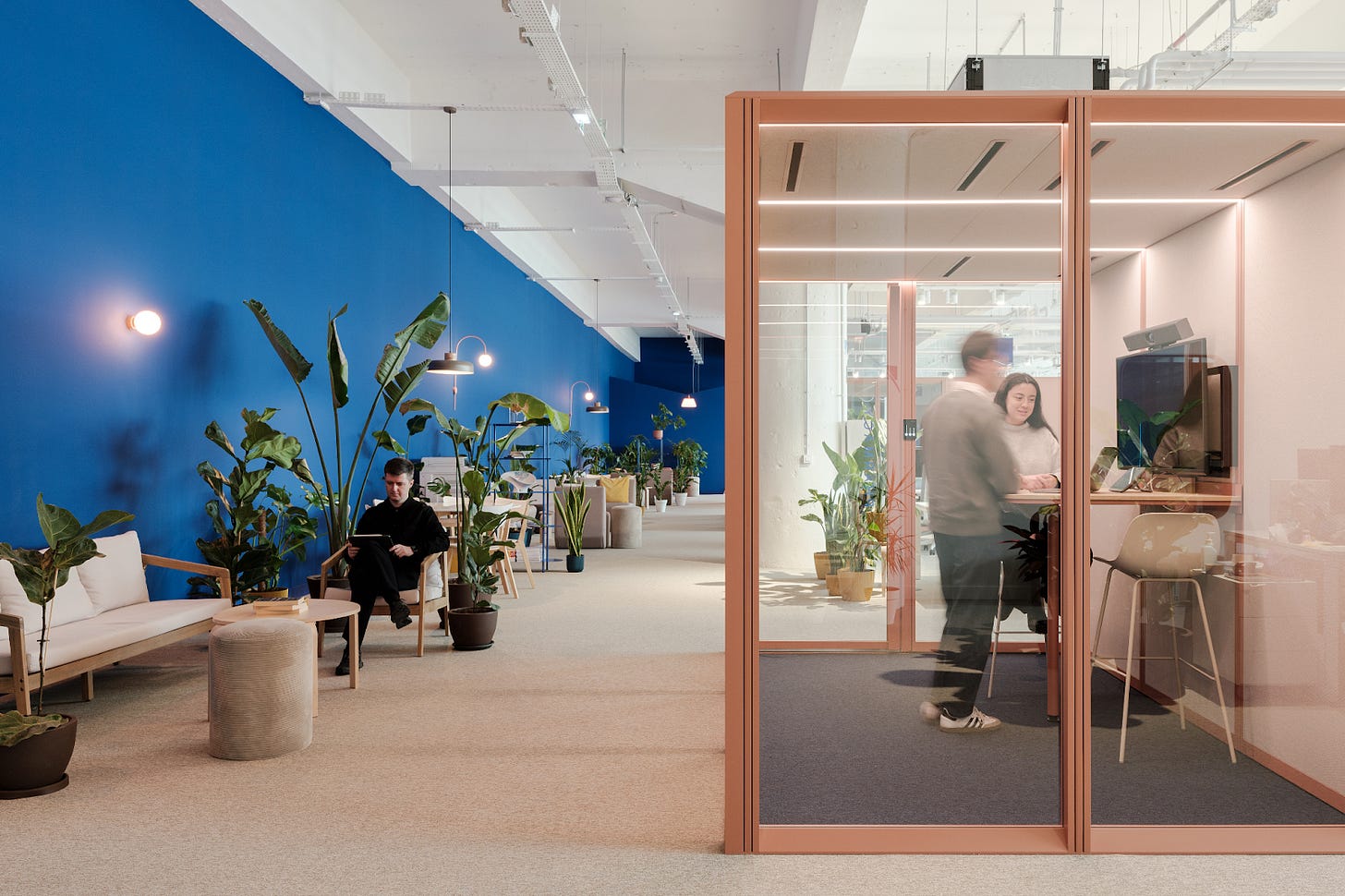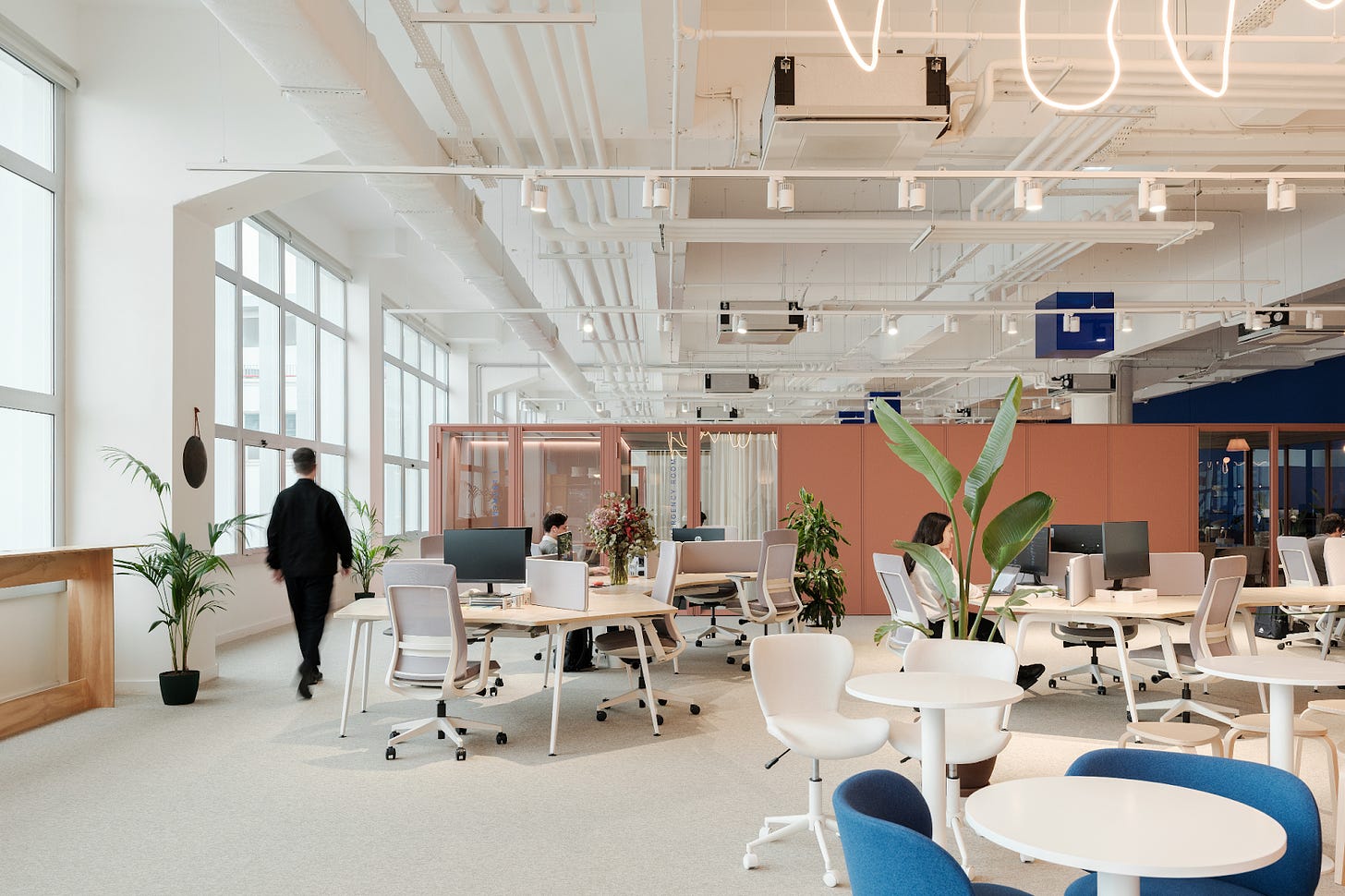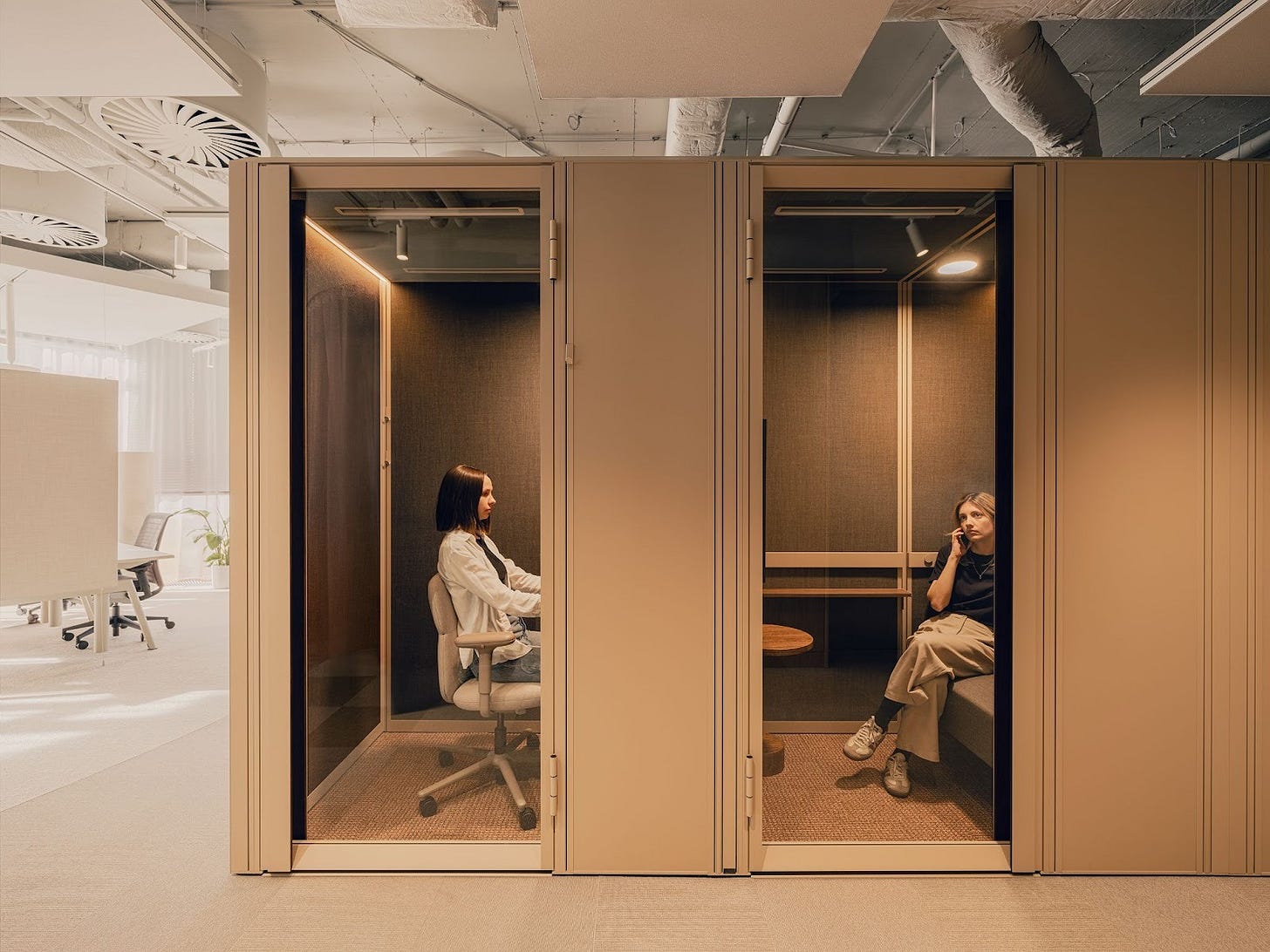Upgrade, Reuse, Profit: How Modular Systems Add Long-Term Value to Your Property
The smarter, greener, and more cost-effective way to future-proof offices
While CAT A+ and CAT B remain the most common office fit-out models, as we explored last week, any adaptations to a fixed space come with additional costs and time delays, which can contribute to waste. For landlords and coworking operators, the limitations of traditional construction make it challenging to balance demand for flexible workspaces that meet evolving tenant needs, while adding long-term value to their properties.
But what if there was another way? A modular system turns the traditional fit-out approach on its head, creating spaces from movable, prefabricated components rather than fixed construction.
Let’s take a closer look at the financial and sustainability benefits of modular systems.
Raising the bar for experience-led workspaces
As companies compete to bring workers back into the office, the ‘flight to experience’ trend raises expectations for inspiring work environments that feel commute-worthy, across design elements such as lighting, acoustics, materials, furniture, and office equipment.
Gensler’s 2025 workplace survey found that access to technology drives 30% of office decisions, with rising tenant demand for specific tech solutions. For example, 12% of workers report having inadequate audiovisual (AV) technology in meeting rooms, which impacts their ability to collaborate effectively across a decentralised workforce. Meanwhile, 17% of workers struggle with poor acoustics and speakers in workspaces.
Consistent upgrades and modernisations to fixed workspaces can be costly, not to mention disruptive for worker productivity during construction works. But with a modular approach, workspace fit-outs and upgrades can be made in minutes rather than weeks.
A few new panels can be clipped in to solve acoustic problems. Lighting settings can be adjusted or modules replaced. Instead of tearing down walls or rewiring ceilings, altering modular systems is quick and precise, aligning with tenants’ needs at that given time.
At our Warsaw office, 18 rooms were configured in just two weeks without modifying any mechanical, electrical, or plumbing systems. All rooms are plug-and-play, independent of the building infrastructure, allowing architects to work quickly while eliminating the need for a full executive project document.
This approach not only saved the equivalent of three months’ lease costs, compared to a traditional office build, but it also saved 15% of the total investment. Ultimately, a modular approach enables flexibility for future modifications to a workspace.
Protecting the bottom line
When it comes to space adaptations, the main drawback of a traditional build is that it locks tenants into a fixed design that’s expensive to change.
Say, for example, a company moves into a CAT A+ workspace only to discover that the layout doesn’t work for their employees a few weeks later. Knocking down a few partition walls might seem simple. However, with rising labour expenses on top of fit-out costs (the average office fit-out in London costs around €2,750 per sq m / £255.48 per SqFt), any modifications can quickly become an expensive undertaking.
As traditional construction works are classified as capital improvements, cash flow is tied up in long-term depreciation. Over time, the cyclical nature of office fit-outs across multiple tenants means that a space may hold essentially zero residual value.
Meanwhile, modular systems can be treated like capital equipment, similar to furniture or office equipment. From an accounting perspective, the cost can be offset by viewing modular systems as assets that can be reused, relocated, or even resold.
For instance, a phone booth can be transformed into a meeting room, a wellness nook, or a collaboration space, without losing value. Once an occupier leaves, a modular system can be easily reconfigured back into a phone booth for the next tenant. Or, the existing occupier might purchase it, taking it with them to their next workspace.
Contributing to the overall property valuation, modular systems make financing options more attractive for building owners, as lenders view them as upgradeable, reusable assets rather than sunk costs.
Future-proofing buildings
There’s another key benefit to modular systems: sustainability. In a traditional build scenario, most materials ripped out during fit-out are thrown into landfills.
But for every 100 sq m of floor space, a fit-out project generates more than five tonnes of waste across strip-out, demolition, construction, packaging, and unused materials.
Information on carbon data is limited for office fit-outs. However, an extensive study undertaken by Allford Hall Monaghan Morris last year revealed that within a single service life, a CAT A office can emit between 58 kgCO₂/m² (for minimal works) to 92 kgCO₂/m² (for more extensive construction).
Calculating that an office space in central London has approximately eight tenants over a sixty-year period, the study found that the fit-out, rip-out, and replacement process across eight cycles may contribute to a staggering 470kgCO₂/m² in carbon emissions.
On the other hand, modular systems are an environmentally-friendly alternative, supporting ESG frameworks. Some of the sustainability benefits include:
Circular use: An entire office can be dismantled, relocated, and reused at the cost of labour only, with no additional material expenses or waste generated.
Longer lifespan: Unlike traditional construction materials, which are thrown into landfills after use, modular solutions can be reused, increasing the lifespan of materials.
Lower environmental impact: Room reconfigurations produce 80–90% less waste and emissions compared to traditional office refurbishments.
The sustainability perks of modular systems can also help property owners acquire green certificates, such as WELL, BREEAM, or LEED, for their buildings. This not only appeals to occupiers, who are looking for sustainability-first workspaces to attract and retain talent, but can also increase property value.
A 2024 Deloitte survey found that Grade A office buildings with sustainability credentials in the US command up to 31% higher annual rents. Crucially, a sustainable workspace remains future-proofed.
Reimagining fit-outs as assets
While the financial advantages of modular systems are clear, their true impact goes beyond cost savings. Flexible modular systems support evolving needs in the modern workplace, reducing waste and carbon emissions, which adds long-term, sustainable value to buildings.
This thought leadership content is brought to you by:
Explore how Mute is leading the adaptable office architecture evolution, offering modular solutions to futureproof office investments while significantly reducing construction costs and CO₂ emissions.









